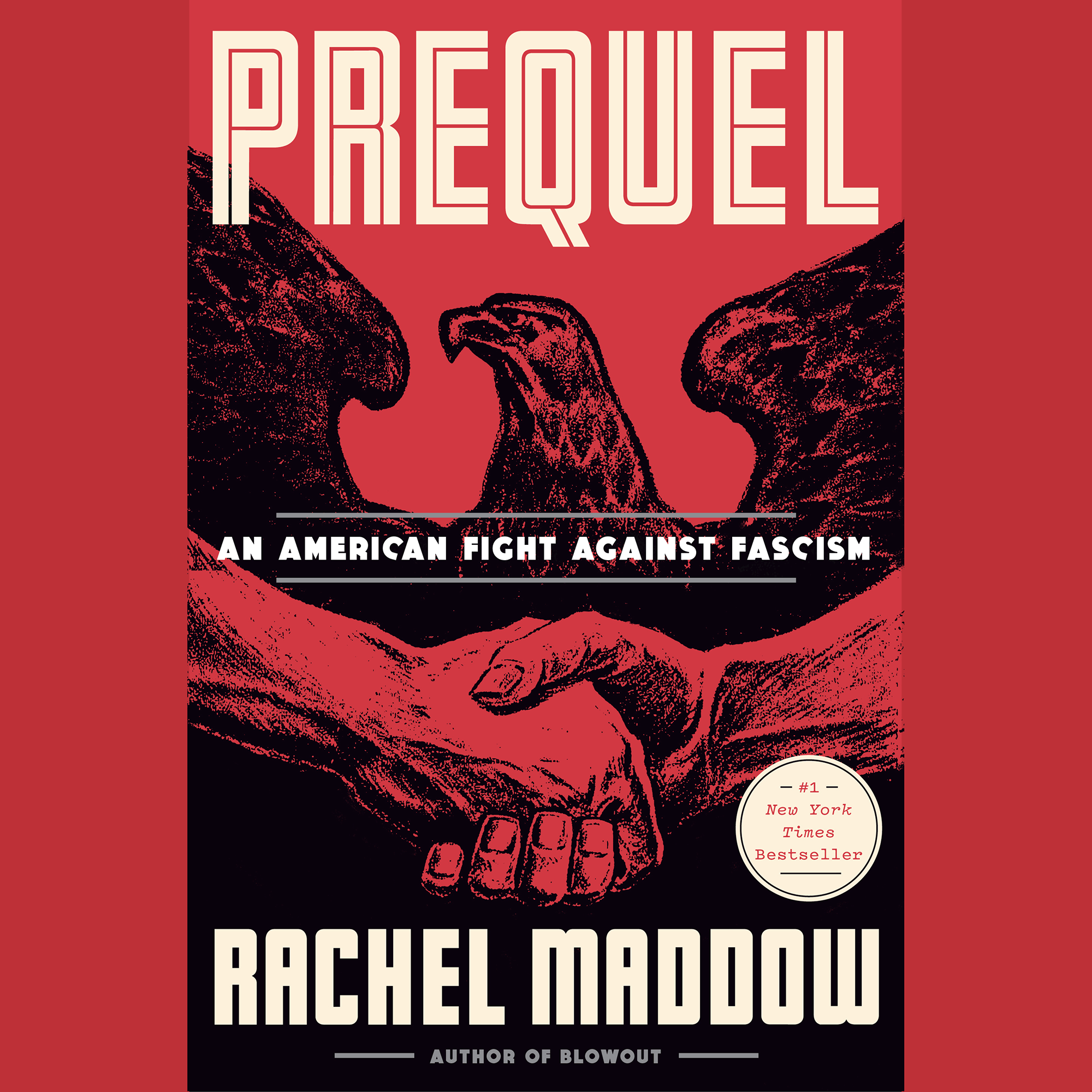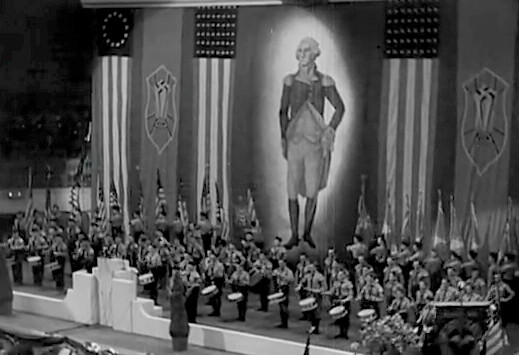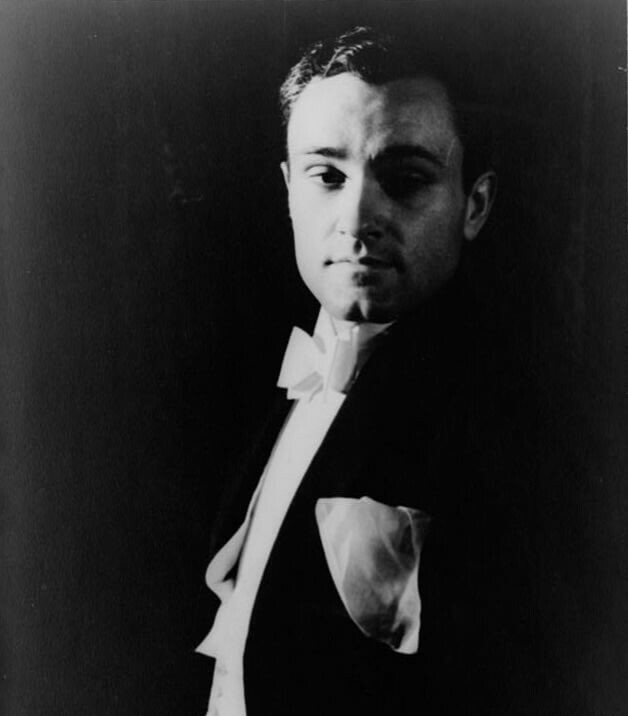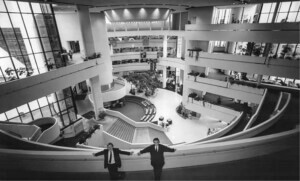Prequel: An American Fight Against Fascism | Rachel Maddow | Penguin Random House | $32
“Every young man should be allowed to make one large mistake.” In 1957, Blanchette Rockefeller, MoMA president and spouse of John D. Rockefeller III, emphasized this maxim to MoMA’s board of trustees after the gaggle convened to discuss if they should admit a new member. The “young man” in question was Philip Johnson, and the “mistake” he made wasn’t singular per se, but rather a long list of actions that made Johnson an important actor in the prewar U.S. fascist movement. Johnson takes center stage in Prequel: An American Fight Against Fascism, Emmy Award–winning MSNBC correspondent Rachel Maddow’s New York Times #1 Best Seller, published last October.
Touring Nazi-occupied Poland in 1939 with SS officers, attending a 1939 Hitler rally in Nuremberg, actively spying for the Nazis, designing a stage for the fascist radio personality Father Coughlin, and translating texts about Nazi political economy into English over a 20-year period were just a few of Philip Johnson’s so-called “mistakes.” Blanchette Rockefeller herself had good reason to wash Johnson’s hands: Throughout World War II, the Rockefellers laundered money for the Nazis via their Chase National Bank office in Vichy, France, facilitating trade agreements for the fascists with complete impunity, as described by Michael Parenti in Blackshirts and Reds.

Whether or not Johnson’s rap sheet is forgivable is a subjective choice, privy to the reader’s own ideological proclivity. Prequel’s first chapter, “The Man in the Glass House,” borrows its title from Mark Lamster’s book, and focuses on Johnson who remains a constant character throughout the text. Maddow offers an unsentimental takedown of Johnson and the far-right circles he ran in. As its title suggests, Prequel attempts to make connections between the U.S. before World War II and today, as fascists around the globe win elections. Maddow makes clear allusions to contemporary plutocrats in the United States, clearly rendering the similarities they bear to yesteryear’s fascist cohort: “America’s Hitler” Lawrence Dennis, automotive giant/anti-Semitic media mogul Henry Ford, Louisiana demagogue Huey Long, and others.
The book resulted from Maddow’s podcast, Ultra, that charts the rise of contemporary fascism. Following the opening chapter about Johnson, subsequent ones reveal a matrix of capital, ideas, and resources, and how each moved between figureheads. Together, these chapters show just how deep fascism penetrated government and society at-large before World War II, and how it was thwarted. Thus, the book can be simultaneously read as a playbook for confronting the contemporary tides of far-right wing zealotry.

Given that Philip Johnson’s legacy has come under fire, largely through activists demanding that MoMA remove his name from the museum, Rachel Maddow’s new book offers important insights. In Prequel, Maddow portrays Philip Johnson as a fascist first and an architect second; the book makes only scant reference to his design contributions. Readers may walk away from Prequel with the opinion that Johnson was a trust fund baby from a WASP family in Ohio with too much time on his hands in his twenties who chose to use his privilege for evil. Maddow describes in detail Philip Johnson’s plans to “curate and fund American style fascism” through vignettes like when Johnson told a Jewish staffer at MoMA that he would be “number one on his list for elimination in the coming revolution.”
In Prequel, Maddow renders Johnson’s affinity for Lawrence Dennis, a Phillips Exeter grad that went on to become what many have called “America’s Hitler.” She describes how Johnson and Alan Blackburn, an old Harvard roommate, drove down to Louisiana to help the demagogue Huey Long run for president. She said at one point, Johnson’s own personal assistant, Ruth Merrill, told FBI investigators that Johnson himself aspired to become “America’s Hitler.” She cites an essay Johnson wrote, “Are We a Dying People?” in a German-funded magazine published in the U.S. that Maddow described as “a thinly-veiled call to cleanse America of Blacks, Irish, eastern Europeans, and of course Jews.”
Maddow also alludes to a 1940 article by a celebrated columnist, Dorothy Thompson, who called Lawrence Dennis and his protégé Johnson the “Tweedledee” and “Tweedledum” of American fascism, respectively. “Seldom directly, but by consciously directed indirection, their business is … to penetrate high places—centers of political influence and economic power—reach the so-called realists and convert them to the idea that democracy needs considerable streamlining, discipline, and authority, and that the economic interests of the United States, its welfare and its peace, can best be served by collaborating with the Germans,” Thompson wrote.

Johnson’s role in Prequel ends in the 1950s just after his FBI investigation concluded. It doesn’t go into his later relationships with the notorious lawyer Roy Cohn, a friend of the tyrannical Senator Joseph McCarthy, or a young developer Donald Trump. “Trump is mad and wonderful!” Johnson told an interviewer for The New York Times in 1984 after designing for him an unbuilt project in Manhattan called Trump Castle.
For general readers, Prequel’s findings may be jarring; imagery that appears in the book like of Hitler Youth camps in suburban New Jersey circa 1934 isn’t a pretty sight. But for many architects, Johnson’s role comes as no surprise, especially after Mark Lamster, Joan Ockman, and the Johnson Study Group have made clear the prolific architect’s politics. In that sense, nothing Maddow presents about Johnson is new.
What is new is the sheer volume of people who will now hear this message, given Maddow’s prowess and celebrity. Upon its release last October, Prequel was number one on The New York Times Best Seller List, and it’s expected to sell hundreds of thousands of copies. With Maddow’s audience, this accomplishment makes the information about Johnson that much harder to ignore.











